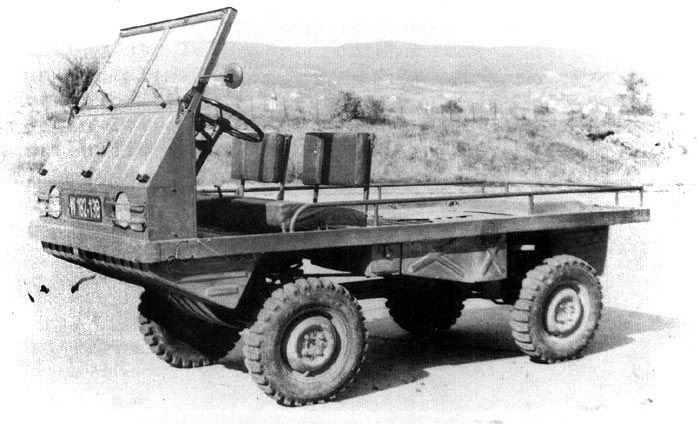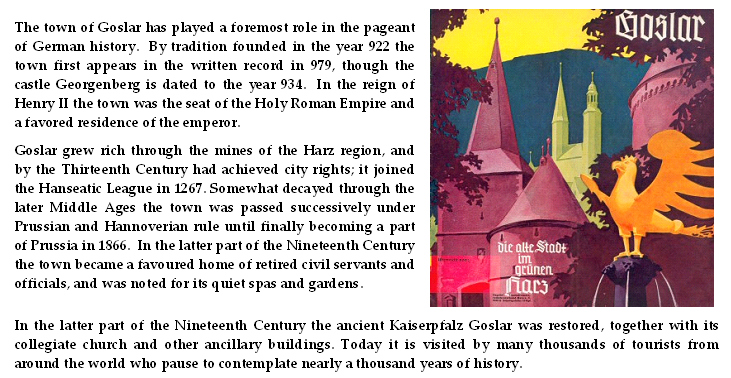Elbinger Volksstimme, Sunday, 1 February 1942
The submarine U-124 was laid down today in the naval shipyards in Memel; she is the fourth boat of the ocean-going Type IX.
Deutsche Presse-Agentur, Monday, 2 February 1942
Blast furnace No.4 of the Bergbau und Hüttenbetrieb at Salzgitter was ‘blown in’ and placed in service today. It is the last of the four units planned for the works, which now is running at full capacity utilising domestic low-grade iron ore. The Salzgitter works have allowed the nation to reduce its dependence on imported iron ore, principally from Nordmark, by an estimated twelve percent.
Wehrgedanken des Auslandes, February 1942
The Wehrgedanken des Auslandes staff looks at the light forces of the French Marine Nationale, which in recent years have undergone a renaissance after a long period of neglect. In this, the first of two parts, examines the French destroyer force.
The light forces of the Marine Nationale are an integral part of the French naval structure, and under the current French naval leadership have undergone significant strengthening and modernisation. While the overall numbers of vessels in service may have declined those which remain are quite potent in their capabilities and the new construction coming out of the shipyards are far more powerful than any of the older vessels now broken up.
In the latter portion of the 1930s the Marine Nationale was faced with the situation of block obsolescence of the bulk of its destroyer force – more than half of the hulls available were of Great War vintage, and of these, only the Aventurier class had seen any significant modernisation. Postwar destroyer construction, which had begun with the Audacieux class in 1921, was continued with the Gallant class of 1926 and the Le Terrible class of 1929, but thereafter languished for many years.
This hiatus was occasioned by the French decision to develop the heavy destroyer (contre-torpillieur ) compared with the smaller torpedo boat destroyer (torpillieur ). The first such vessels were the four units of the Le Fantasque class of 1933, followed by four similar units of the Mogador class in 1934. Of nearly three thousand tons standard displacement, the Marine Nationale classifies such vessels as small light cruisers. The Jaguar class of 1936, of which a total of sixteen units were constructed, was of smaller size and classed as destroyers. French officials are quick to explain that the division of the contre-torpilleurs between the two categories is a legacy of the now-defunct Cleito Treaty.
The tactical roles of the contre-torpillieur are much the same as the heavy destroyer in our own service – independent surface action against naval or mercantile targets – particularly by night, and long-range scouting in advance of the fleet. This is contrasted with the torpillieur , which is best employed as an escort to fleet units.
At the end of the 1930s the French naval leadership squarely faced the problem of the obsolescence of the destroyer force and took the difficult decision to scrap not only the twelve units of the Bisson class and the twenty-four units of the wartime Arabe class, but the twenty-four units of the Aventurier class – a total of sixty units representing half of the existing force. This decision aroused some adverse comment in the popular press but was fully supported by serving officers who recognised that the ships in question no longer had a place in a modern battle fleet.
To replace the vessels scrapped, the Marine Nationale at first continued the construction of the contre-torpillieur type, represented by the four units of the Surcouf class, laid down in 1941. These 2,800-ton vessels represent the epitome of the heavy destroyer type – armed with six 13.8cm rapid fire guns, a powerful antiaircraft battery and an extremely strong torpedo broadside, designed for 36 knots (which, according to press reports, were exceeded on trials), and reported to be fitted with the French equivalent of Seetakt for fire control of the main and secondary armament at night. These ships are now entering service with the Marine Nationale and are a formidable addition to its capabilities.
However, the cost of these fine vessels militated against their large scale construction. As follow-on to the Surcouf class the Marine Nationale had drawn up plans for the Escorteur d'Escadre Type 42 , the first of which was to be known as the Chasseur . This design was based on the Surcouf hull form, and would have been nearly 2,800 tons standard displacement – as large as the Surcouf design. Intended to work with the fleet the design called for eight 10cm dual purpose guns in four twin mounts, an antiaircraft battery featuring the latest version of the 4cm gun and, again, a very powerful torpedo broadside. These would have been very fast ships, designed for 36 knots, but the design was abandoned due to their cost.
Instead the Marine Nationale developed the slightly smaller and more affordable Escorteur d’Escadre Type 41 , which has become known as the Weapon class. Reverting to the hull form of the earlier Jaguar class contre-torpilleur the first of these ships was laid down in 1941, and features a more than adequate armament of six 12cm dual purpose guns, matched with the 4cm light antiaircraft gun, and a slightly smaller torpedo broadside; the maximum design speed has been reduced to 35 knots, which is more than adequate for a vessel intended to operate principally with the larger units of the French fleet. Eight vessels of the Weapon class were laid down during 1941, the first four of which are presently running sea trials and working up. They represent an excellent balance of the qualities required by the destroyer and can be seen in no way inferior to the Paderborn class in our own service, or to the latest designs of the Royal Navy.
The confidence shown by the French naval authorities in the Escorteur d’Escadre Type 1941 design is shown by its decision to construct a further sixteen vessels of this type under the 1942 Estimates. Known as the Type 41B or Cimeterre class, these vessels are armed with the 10cm dual purpose gun originally envisaged for the Chasseur , and now seen as the preferred anti-air weapon of the Marine Nationale. The Type 41B also introduces a mixed CODAS powerplant to the French destroyer force, as these sixteen ships will have diesel engines for cruising while retaining steam turbines for high speed operations. Eight vessels are presently under construction and a further eight are expected to be laid down later in the year, with all of them being completed by May 1943. Their entry into service will go far to replenish the strength of the French destroyer force, which will be obligated to screen the many new aircraft carriers and other capital warships soon to be commissioned.
According to foreign intelligence reports however, the Marine Nationale did consider other alternatives to the Escorteur d’Escadre Type 1941 design. One such design posited in 1941 called for a vessel of approximately 1,700 tons, capable of 34 knots, armed with a quartet of the new 10cm dual purpose gun and sixteen 4cm automatic guns, carrying a broadside of eight torpedo tubes. While adequate and certainly less costly than the new Cimeterre class, this design appears to have been abandoned due to its rather lack-luster performance and perceived ‘weakness’ of its armament. In the event of war the design might be revived as a war emergency type to make good deficiencies in the number of destroyers


Quoted
Originally posted by BruceDuncan